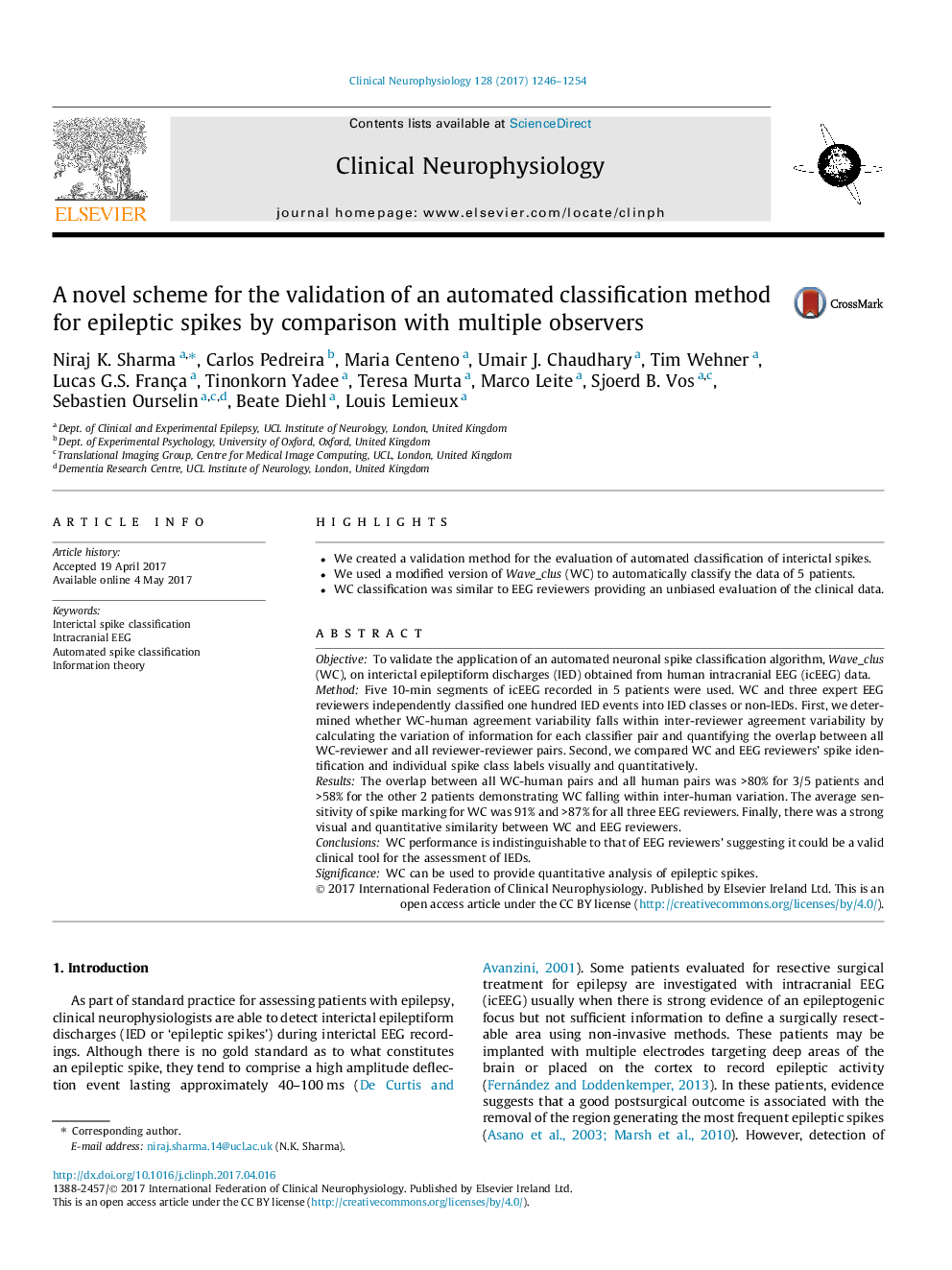| کد مقاله | کد نشریه | سال انتشار | مقاله انگلیسی | نسخه تمام متن |
|---|---|---|---|---|
| 5627825 | 1406356 | 2017 | 9 صفحه PDF | دانلود رایگان |
- We created a validation method for the evaluation of automated classification of interictal spikes.
- We used a modified version of Wave_clus (WC) to automatically classify the data of 5 patients.
- WC classification was similar to EEG reviewers providing an unbiased evaluation of the clinical data.
ObjectiveTo validate the application of an automated neuronal spike classification algorithm, Wave_clus (WC), on interictal epileptiform discharges (IED) obtained from human intracranial EEG (icEEG) data.MethodFive 10-min segments of icEEG recorded in 5 patients were used. WC and three expert EEG reviewers independently classified one hundred IED events into IED classes or non-IEDs. First, we determined whether WC-human agreement variability falls within inter-reviewer agreement variability by calculating the variation of information for each classifier pair and quantifying the overlap between all WC-reviewer and all reviewer-reviewer pairs. Second, we compared WC and EEG reviewers' spike identification and individual spike class labels visually and quantitatively.ResultsThe overlap between all WC-human pairs and all human pairs was >80% for 3/5 patients and >58% for the other 2 patients demonstrating WC falling within inter-human variation. The average sensitivity of spike marking for WC was 91% and >87% for all three EEG reviewers. Finally, there was a strong visual and quantitative similarity between WC and EEG reviewers.ConclusionsWC performance is indistinguishable to that of EEG reviewers' suggesting it could be a valid clinical tool for the assessment of IEDs.SignificanceWC can be used to provide quantitative analysis of epileptic spikes.
Journal: Clinical Neurophysiology - Volume 128, Issue 7, July 2017, Pages 1246-1254
